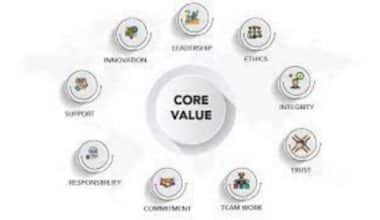Labor cost is a financial term used interchangeably with “cost of labor” on financial reports. This value calculates the total cost of employee pay and benefits. So, either as human resources (HR), finance, accounting, or executive manager, understanding the labor cost and how it impacts you and your company is of utmost importance. In this article, we’ll explore the labor cost of painting and roofing per square foot and the difference between the cost of labor vs the cost of living.
Overview
Cost of labor is the amount paid by an employer to cover an employee’s wages and benefits, plus related payroll taxes and benefits. It is an important value that finance and accounting professionals calculate to determine the direct and indirect price that a company pays for labor. Thus, understanding the cost of labor helps companies to put a price on their products. This is because, without knowledge of direct and indirect costs, a company may find it challenging to arrive at the right cost for its products. As a result, a deep understanding of it and how to use it is beneficial for the economy.
What Factors Affect Labor Costs?
Factors will vary by industry (for example, a clothing company versus a local restaurant), but some of the factors most all businesses will need to account for include:
- The cost of hiring
- The cost of onboarding
- Wages
- Payroll taxes
- Health care
- Sick days
- Vacation days
- Benefits
- The source of your workforce
- Human Insurance
- Meals
- Supplies
- Training
- resources
In essence, think about your expenses for everything listed above and you’ll get closer to figuring out how much labor costs.
What is the Formula for Labor Cost?
Direct labor cost per unit = direct labor hourly rate X time for producing one unit. First, you need to determine the direct labor hourly rate by dividing the it by the number of hours worked.
How Does Labour Cost Affect a Business
Higher labor costs (higher wage rates and employee benefits) make workers better off, but they can reduce companies’ profits, the number of jobs, and the hours each person works. The minimum wage, overtime pay, payroll taxes, and hiring subsidies are just a few of the policies that affects it.
How to Reduce the Cost of Labor
Reducing the labor cost does not mean that you should pay employees less, but there are other ways to reduce one of the highest costs for your company. Here are some suggestions to help you take control,
- Plan your schedule a month in advance
- Calculate the as you plan
- Include a rotating shift
- Train employees to fill-In for other positions
- Check the hours of overtime
- Establish clock-in regulations
- Reduce absenteeism
Labor Cost Roofing per Square
Roofing contractors typically estimate costs by the square. One square equals 100 square feet. So, when calculating the number of squares needed, keep in mind a pitched roof’s square footage is typically 15% to 40% greater than the home’s floor square footage. As a result, contractors begin by measuring and inspecting the roof to determine if any structural repairs are required. After confirming your choice of roofing materials, the installer uses the measurements and inspection results to calculate the total costs for materials, repairs, and overhead. So, roofing costs $2.00 to $3.50 per square foot on average or $200 to $350 per square to install not including materials and supplies.
Roofing Labor Cost Per Square: Breakdown
This cost makes up 50% to 70% of the cost to replace a roof. Labor costs are highest for steep, multi-story, or difficult-to-access roofs due to the extra safety precautions and equipment required. Now let’s break down the cost of roofing per square depending on the material.
#1. Labor Cost to Install Shingles
It $200 to $350 per square to install shingles, depending on if they’re standard asphalt fiberglass or architectural laminated shingles. Shingle roof replacement costs $5,700 to $16,000 total on average, including installation and materials.
#2. Metal Roofing Labor Cost Per Square
Thecost to install metal roofing is $400 to $800 per square, depending on the roof size, type, and location. Standing seam metal roofs typically require more labor time and expertise than corrugated sheet metal roofing. A new metal roof costs $7,500 to $40,000 total on average.
#3. Tile Roof Labor Cost Per Square
Installing a tile roof costs $500 to $1,700 per square for labor alone, depending on the tile type, material, and job complexity. It typically costs more for roofs with ornate designs or color patterns. A new tile roof costs $10,500 to $62,500 total on average, including work and materials.
#4. Labor Cost to Install a Wood Shake Roof
Labor to install a cedar shake roof costs $400 to $800 per square. Cedar shake installation is labor-intensive as each shake requires hand-nailing. Wood shake materials add $300 to $700 per square, for a total installed cost of $12,900 to $28,200 on average.
#5. Flat Roofing Labor Cost Per Square
Labor to install flat roofing costs $200 to $450 per square, depending on the type and job complexity. Materials add $100 to $650 per square, bringing the total installed cost to $300 to $1,100 per square or $4,000 to $16,800 total on average.
Labor Cost Roofing per Square: Factors To Consider
Removing a major structural element of your home is never easy. This means you will likely encounter additional fees for related work before, after, and during roof replacement. Therefore consider the following factors,
- Removal of the current roof
- Repairs required
- Presence of skylights, chimneys, Etc.
- Clean up costs
- Roof warranty and insurance
- Roof size
- Number of stories
- Location
What are the Four Types of Labor costs?
To best understand how money is being allocated, labor costs can be placed into multiple categories. Depending on the type, these costs can range from a known factor to unpredictable, but each one is designed to benefit your company in one way or another.
- Direct labor costs
- Indirect labor costs
- Variable labor costs
- Fixed labor costs
Painting Labor Cost per Square Foot
When looking at how much it costs to hire a professional painter to change your existing color, you’ll find that most providers charge you per square foot. As much as prices differ based on specific variables, there is a base set of prices you can expect to pay no matter who you decide to go with. Professional painters are great because they can cover more space and do a more precise job than if you took on the task of re-painting your home yourself. Most professional painters charge $1.50-$3.50sq/ft for painting interior spaces. You can expect that price to go higher when you factor in specific add-ons like trim or walls.
Factors That Affect the Labor Cost of Painting per square foot
The conditions inside a home vary drastically from house to house, so be sure to consider these factors that may affect the labor cost of painting your home per square foot,
#1. Size of the House
While it might seem obvious that the larger a home, the more expensive it is to paint, there are other factors related to house size to consider. If you need more than one level of your home painted, additional labor fees will be included in your pricing to account for transporting materials from floor to floor.
#2. Type of Paint
There are dozens of paints available for you to choose from, some cheaper than others. Glossy paints cost a bit more than matte or satin paints. But basic paints made with synthetic coloring will run from $20 to $30 per gallon, while designer, high-end paints made with natural coloring can cost as much as $100 per gallon.
#3. Materials Needed
Besides equipment like ladders and sprayers, most of the supplies needed to paint your home need to be purchased new for each job. The cost of paint brushes, drop cloths, paint pans, rollers, tape, and more will be included in the quote. If you think you can get these supplies at a cheaper cost, ask your painter if you can purchase them separately.
#4. Cost
While painting companies don’t usually disclose their actual per-hour rate and instead provide a total project cost, you can expect a painter to cost between $20 and $50 per hour. This is because painters most often charge by the wall or floor square footage.
#5. Movable Furniture
Moving your furniture out of or to the center of the room yourself is a great way to save money. Otherwise, the painters will move it for you, resulting in additional labor costs.
#6. Wall Repairs
Your painter might suggest any necessary wall repairs if you have dents, water stains, scratches, or other forms of damage. So, expect it to be an add-on cost, and it’ll be worth taking care of while you have a professional in your home.
Cost of Labor vs Cost of Living
The cost of living is the minimum amount of money a person needs to afford a basic standard of living where they live. It is usually more expensive to live in major cities than in smaller towns, with the cost of living being highest for downtown residents. while the cost of labor is the total amount that a company or organization spends on its employees. It can also refer to the demand for labor and how many people are working or can potentially work in a certain region.
Cost of living vs. cost of labor: Different Terms
Depending on whether you consider the cost of labor for a company or for a region, these two terms can compare differently. These are some primary differences between the cost of living and the cost of labor:
#1. Who incurs the cost
One fundamental difference between the cost of living and the cost of labor is who or what incurs each cost. For the cost of living, a consumer incurs the costs of housing, food, and other living essentials. The cost of labor applies to companies and organizations rather than individuals. ( Cost of Labor vs Cost of Living).
#2. How to calculate it
Which aspects to consider when calculating each cost is another area in which the two differ. To understand the cost of living, you figure the cost of health care, medicine, groceries, housing, transportation, and other necessities. But when businesses calculate the cost of labor, they consider wages, labor taxes, and various indirect costs.
#3. Ease of Alteration
The cost of living and the cost of labor depends upon different variables, so each one is different for increasing or decreasing the total. They usually rise or decline steadily and rarely face drastic changes unless social or environmental factors occur. The cost of labor, however, is more easily alterable as a company or business administrators can reduce staff, decrease hours of labor, lower wages or use other ways to save money on total labor expenses. When considering the cost of labor for a region, it may be more similar to the cost of living.( Cost of Labor vs Cost of Living).
#4. Range of Impact
The size of the environment in which the cost of living and the cost of labor occur is another aspect in which the two differ. You can calculate the cost of living for a region as small as a neighborhood within a city, or you can calculate it according to regions as large as countries or even continents. The cost of living affects each citizen within that region, determining how much money they need to sustain an average lifestyle.
#5. Their Importance
By understanding the cost of living in each potential location, you can determine which city may best serve you for saving money and making the most of your earnings. while understanding the total costs of labor, a company or organization can determine which aspects are most costly and strive to lower them. This can help during times of low demand or if the company wants to increase profits. ( Cost of Labor vs Cost of Living).
#6. Factors to Consider
These are some aspects to consider when calculating the cost of living: housing, food, healthcare, clothing, transportation, etc, while the cost of hiring, cost of onboarding, wages payroll taxes, benefits, etc are factors to consider.
References
Related Posts
- COST ANALYSIS: What It Means, How to Do It & Importance
- BUSINESS STARTUP COSTS: What’s Included & How to Calculate It
- LABOR POSTER COMPLIANCE: Do I Need a LL Poster for My Business?
- ADOPTION IN THE US: Cost, Requirements, Agencies & Guide
- DIVORCE COSTS: State Costs and Lawyer Fees
- SALES DEVELOPMENT MANAGER: Meaning, Salary, Duties, Skills & Interview Questions






